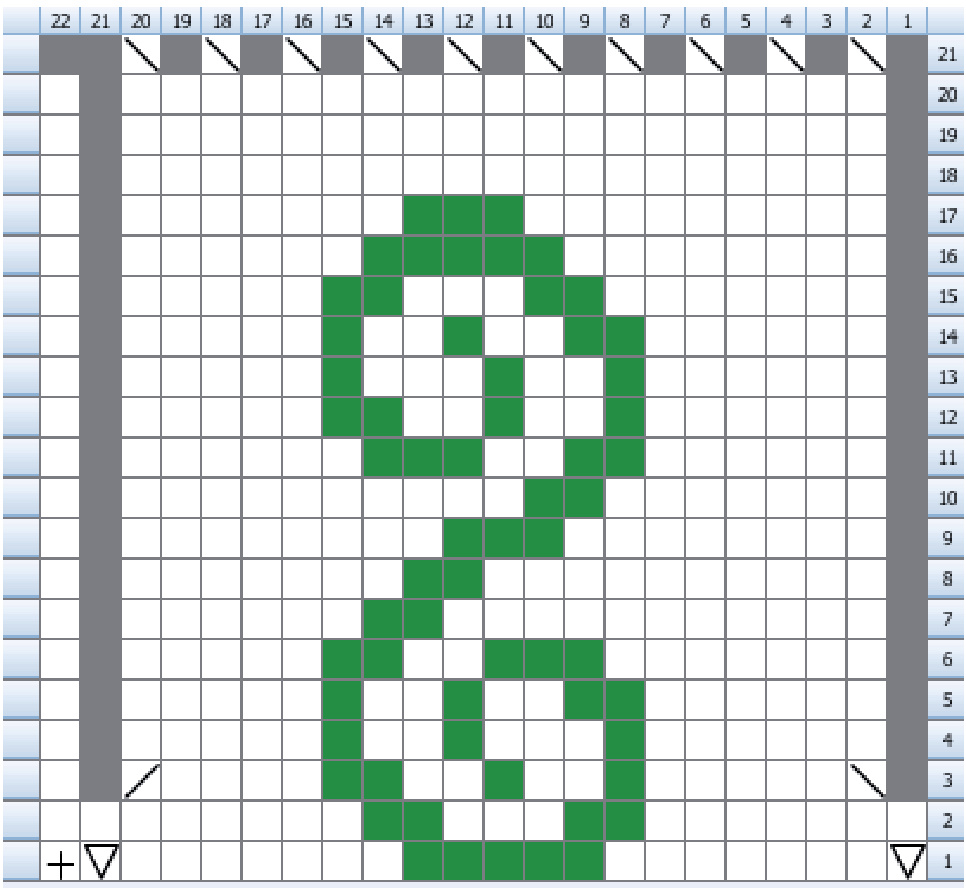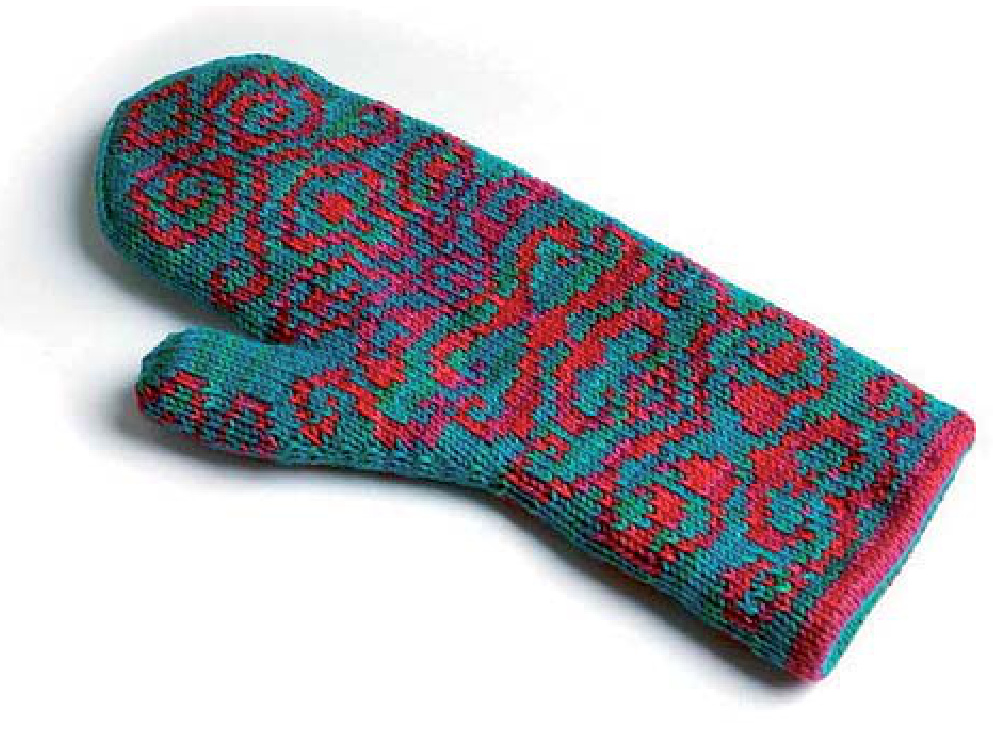Materials:
210 meters / 230 yards of fingering weight yarn (shown in wollmeise $100\%$ superwash, colorway Pfefferminz Prinz), about 60g / 2,1 oz. (=color A) 210 meters / 230 yards of fingering weight yarn (shown in Wollmeise $100\%$ superwash, colorway Dornroschen), about 60g / 2,1 oz. (=color B) 2 mm circular needle (or size to get the given gauge) long enough for magic loop Two $2{,}5\;\mathsf{m m}$ circular needies (or one size bigger than the needles you needed to get gauge) long enough for magic loop Waste yarn Tapestry needle 2-3 mm crochet hook one stitch marker
Gauge:
30 stitches and 40 rows on 10 cm / 4" in stockinette stitch. IMPORTANT: You need to make a doubleknitted swatch as this technique alters the gauge!
Size:
Women's Medium 18 - 19 cm / 7 - 7 1%2" hand circumference (look at the picture above where to measure)
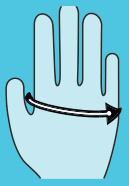
18 - 19 cm / 7 - 7 1%2" hand length (measured from beginning of thumb gusset) If you have larger hands $(19-20\ c m\slash7\%-8^{\ast}$ circumference), use slightly larger needles to get a gauge of about 28stitchesand38rowson $10\;\mathsf{c m}\,/\,4^{\circ}$
Notes:
These mittens are knit using the “magic loop" method, however you canusedoublepointed needles or two circular needles if you prefer. Just be aware that the instruction often refers to needle 1 and 2 (meaning each half of the total stitch count). READTHEWHOLE PATTERNBEFOREYOU STARTKNITTING!
About Doubleknitting:
Indoubleknitting,twolayersoffabricarecreatedononeneedle (think of it as two layers of stockinette with wrong sides facing each other), resulting in twice as many stitches on the needle as you would normally need to knit a piece of plain stockinette. Every part of this project, from cast-on to bind-off, will feature detailed instructions on how this technique works.
Part 1: The Cast-On
Using the provisional crochet cast-on and the $2{,}5\ \mathsf{m m}$ needle, cast on 52 sts in color A.Join in the round and work in stockinette (starting with a knit round) for 4 rounds. (line $=$ cast-on yarn tails/ dotted line $=$ workingyarn)
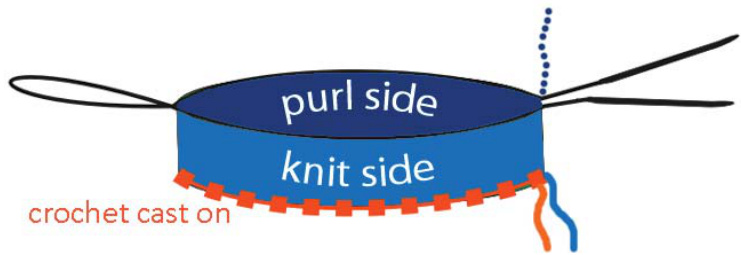
Turn the tube inside out so the purl side faces you with the working yarn (color A) hanging down.

Put the 52 loops from the provisional cast on back on the second $2{,}5\;\mathsf{m m}$ circular (marked red in the following graphic).

Starting at the beginning of the round (tail of color A from the cast-on), begin working reverse stockinette in color B for 6 rounds. Make sure that you work in the same direction as you have done on the previous rounds when using color A.
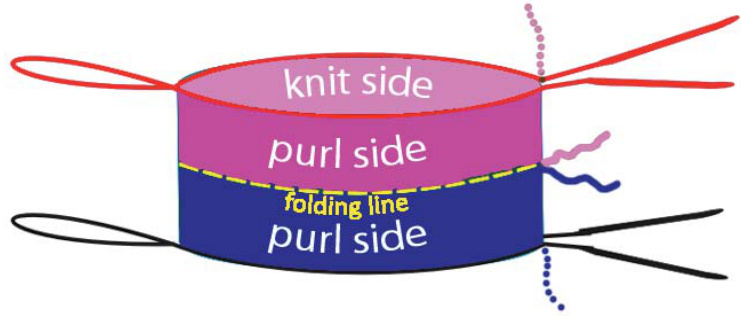
Thread the tails of both A and B on a tapestry needle and pull them on the purl side (if they aren't already there). Weave in the ends. Mark the beginning of the round using a split ring marker. Fold the piece of knitting so that the needles are side by side and the purl sides are facing each other (folding line is marked in the graphic above). Using a 2 mm needle, transfer all stitches from both needles onto one needle, alternating one stitch from A and one stitch from B.Start with a stitch from the needle which is next to you (slip as if to purl), then take a stitch from the other needle.Continue until all stitches have been transfered (see the following picture. $^{2}\,\mathsf{m m}$ needle shown in green).

Separate them into two times 52 stitches to be ready for working in the round using magic loop.
Part 2: Doubleknitting 101
In plain doubleknitting (without colorwork) you will go on like this (starting with a stitch in color A): knit this stitch using color A with both strands of yarn in back.
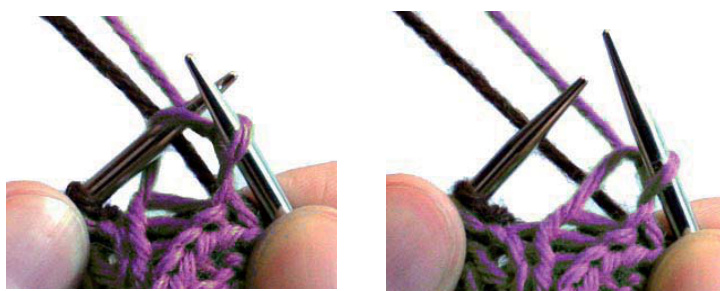
The next stitch (color B needs to be purled using color B while holding both yarns in front.
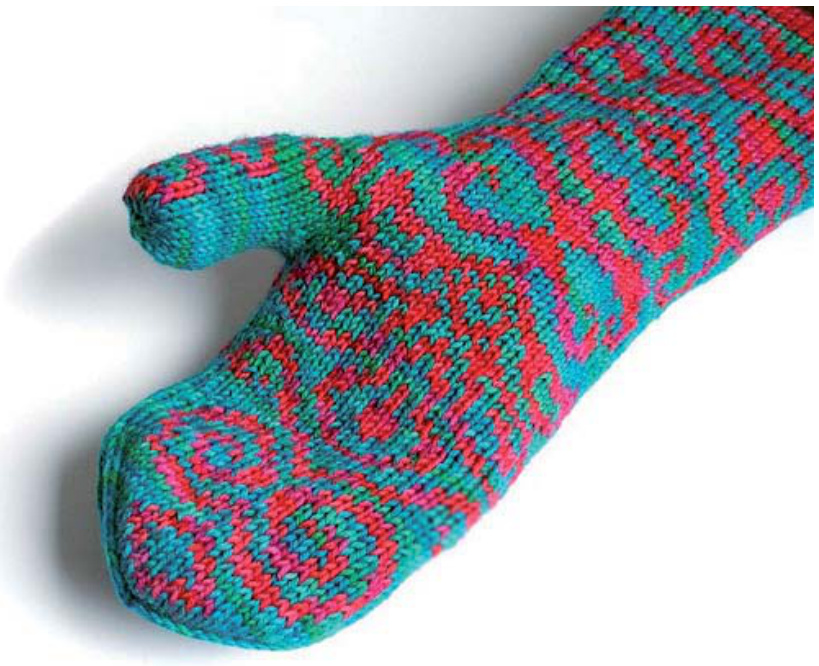
It is of great importance always to move BOTH yarns to the frontorback! The colorwork motif is achieved by reversing the colors (knit with B and purl with A). This pattern is based on a chart, where each square represents (in contrast to fair-isle) not only one stitch but TWO stitches (one from the front layer which needs to be knitted and one from the back layer which needs to be purled). The charts are read from right to left and from bottom to top. Return to the right hand side of the chart after finishing each round. To get you used to the system, I will give you a small example chart and explain how every stitch needs to be worked (this isn't part of the mitten-pattern! Just read through it to get the hang of the technique):
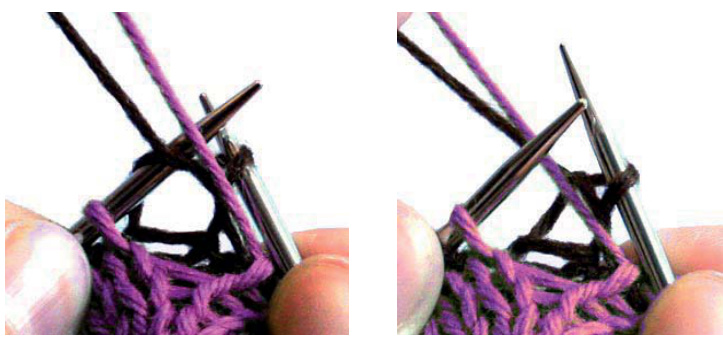
This will result in a fabric having one side in color A and the othersideincolorB.
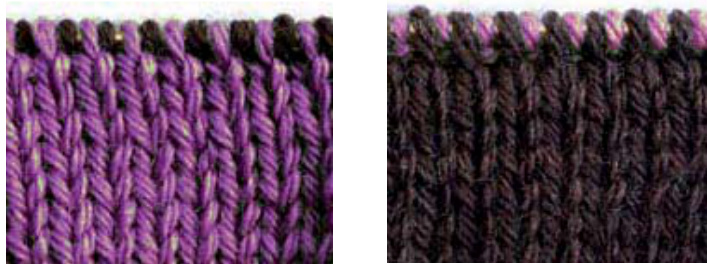
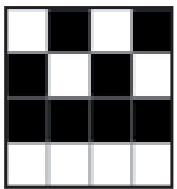
This would translate to:
Round $1!\,^{\star}\!\mathsf{k}\,^{\mathsf{\mathsf{\mathsf{\mathsf{1}}}}}$ in white holding both yarns in back, p1 in black holding both yarns in front\* repeat 3 more times Round 2: $^{\star}{\sf k}^{\intercal}$ in black holding both yarns in back, p1 in white holding both yarns in front\* repeat 3 more times Round3: $^{\star}{\sf k}^{\intercal}$ in white holding both yarns in back, p1 in black holding both yarns in front, k1 in black holding both yarns in back, p1 in white holding both yarns in front\* repeat one more time. Round $4;\,^{\star}\,\mathsf{k}\,^{\mathsf{1}}$ in black holding both yarns in back, p1 in white holding both yarns in front, k1 in white holding both yarns in back, p1 in black holding both yarns in front\* repeat one more time.
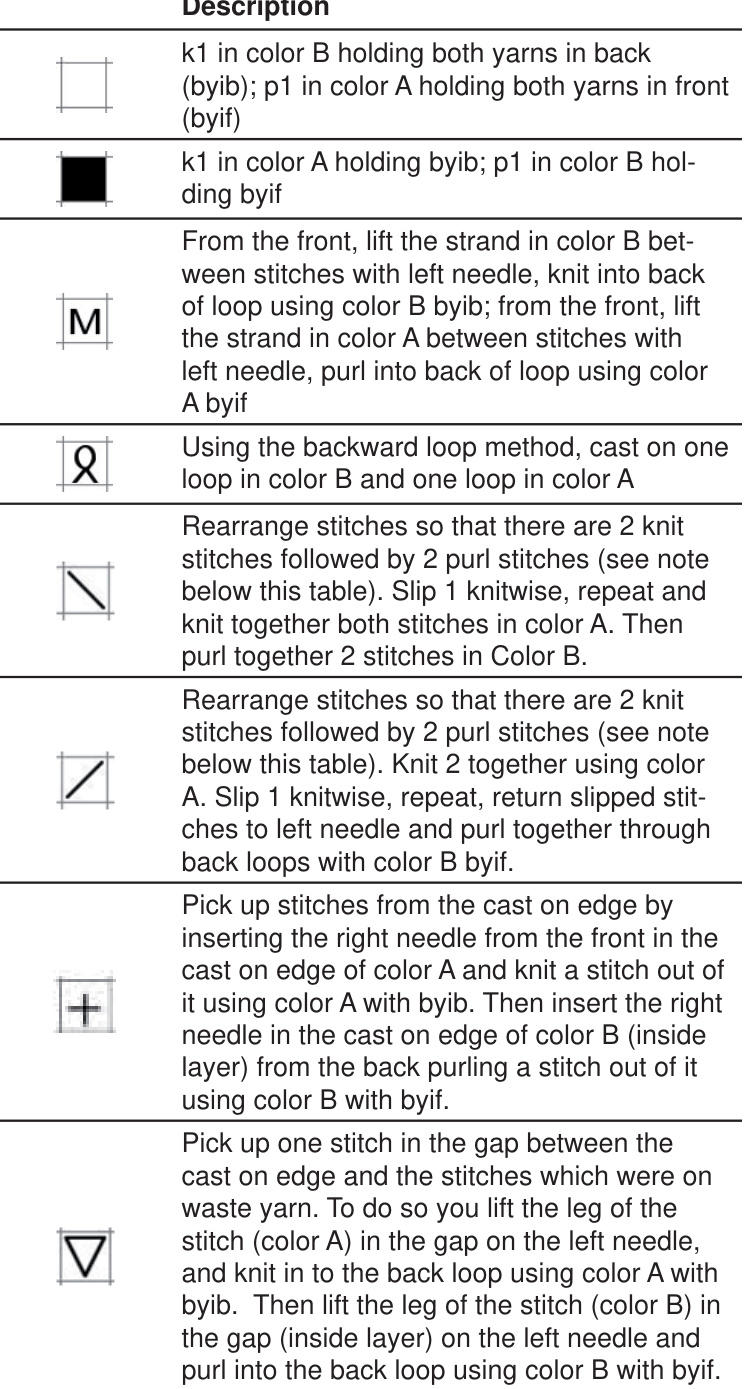
How to rearrange stitches:
To work decreases in doubleknitting, you need to rearrange the stitches so that there are 2 knit stitches followed by 2 stitches two purl stitches: Insert the right needle in the two loops of both knit stitches by picking the loops with the needletip, holding the needle in front of the left needle. The loop of the purl stitch which is in between is left out.
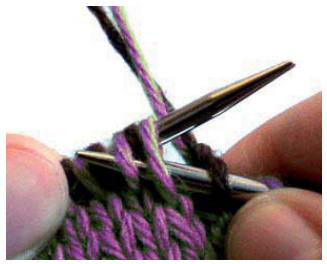
Then pull the left needle out of the last 3 stitches (the two in color A being already on the right needle). Insert the left needle in the loop of the purl stitch which is currently on no needle,
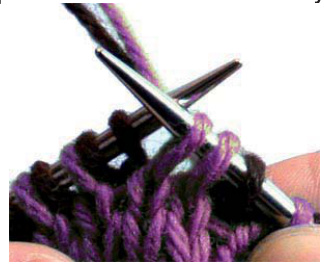
then slip the two knit stitches back on the left needle. As you may have noticed: this is quite similar to cabling without acableneedle.
Part 3: Working the cuff and hand
This pattern includes one chart for the whole mitten (both for the left and the right one). Start working chart 1. After you have created the thumb gusset you have to transfer the stitches for the thumb onto waste yarn. This is indicated by a black line in the chart. When you reach this line go on as follows: place the next 38 stitches, alternating 19 in A and 19 in B on waste yarn, cast on one $(\bigstar\bigstar)$ and go on kniting the remaining stitches according to the chart. After finishing the last round of the chart 1 there will be a total of 16 sts (8 in each color)left. Place these stitches on two separate needles (one for each color). Break the yarn of color B (about 40cm long) and use a tapestry needle to thread it through the 8 stitches of color B two times. Pull tight. Break the yarn of color A (about 40cm long) and use a tapestry needle to thread it through the 8 stitches of color A two times. Pull tight. Weave in both ends between the layers so that they are invisible onboth sides.
Part 4: The Thumb
Place the38stitches whichwere held onwasteyarnback on the needle carefully, in the proper order, and work Chart 2. Keep in mind that in the first row you will have to pick up a total of 6 sts (3 in each color): 4 in the gaps between the between the cast on edges and the stitches now on your needle and 2 from the cast on edges. Having completed the last round of the chart go on as described in part 3 to finish up the remaining stitches, the only difference is that you will have 10 sts in color A and 10 sts in color B left this time. Weave in all ends, block if necessary.
Chart 1
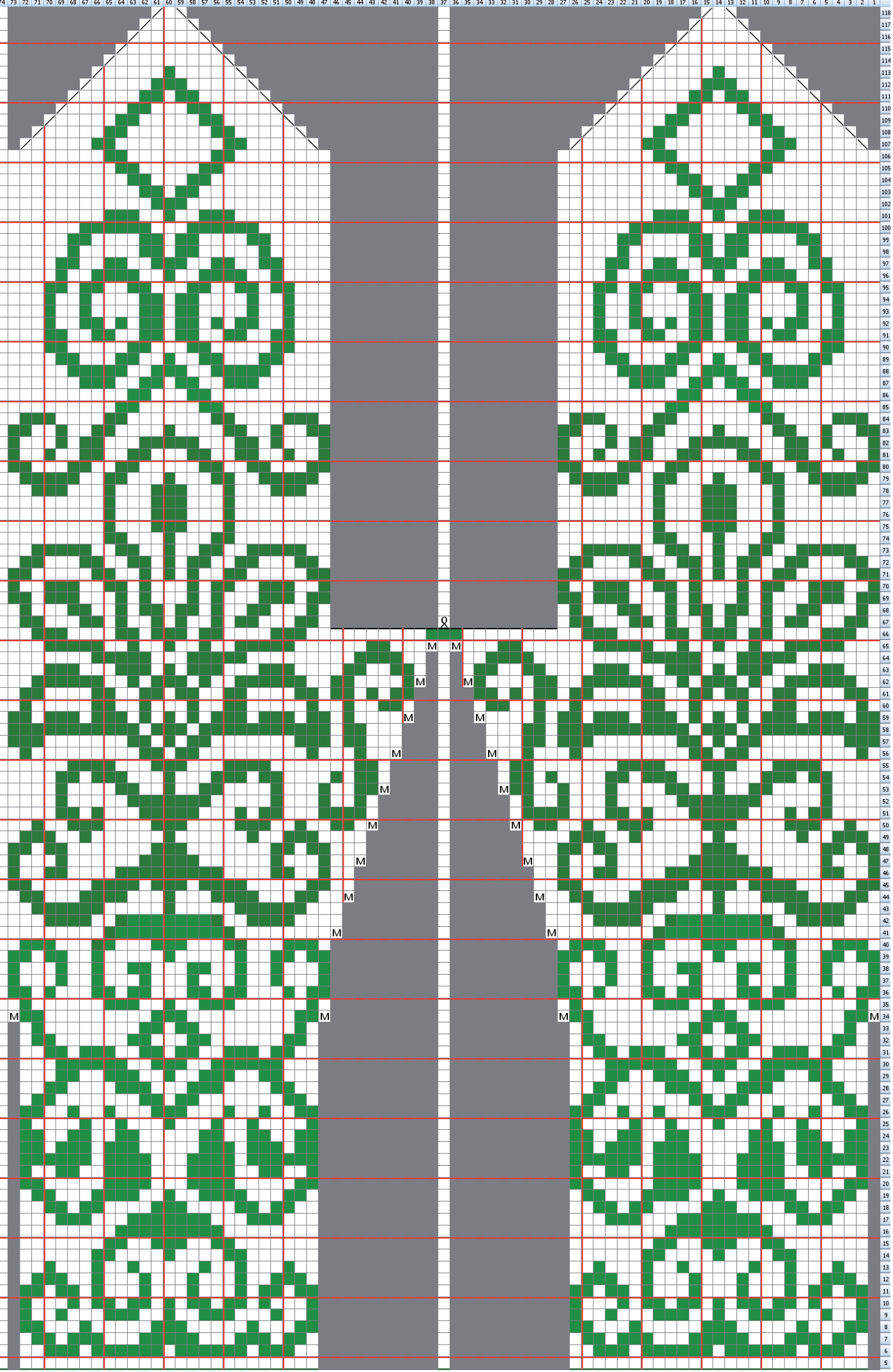
Chart 2: Thumb
